Rooftop safety is critical in various professions, including construction, maintenance, solar panel installation, and HVAC repair. In this insightful blog post, we will explore 11 common rooftop safety hazards you must be aware of. Every year, numerous accidents and injuries occur due to overlooking these hazards, so staying informed and vigilant is essential. Whether you’re a seasoned expert or just beginning your career, it’s crucial to understand these risks to ensure a safe working environment for yourself and your colleagues.
Importance Of Roof Safety Hazards
The importance of roof safety hazards cannot be overstated, as they significantly impact the well-being of workers, building occupants, and the general public. Inadequate safety measures can lead to injuries, fatalities, property damage, and financial losses.
According to the International Labour Organization (ILO), around 2.3 million people worldwide die annually from work-related accidents and diseases. Many of these fatalities are attributed to falls from height, including rooftop accidents. In the United States, the Occupational Safety and Health Administration (OSHA) reports that falls are the leading cause of death in the construction industry.
Some reasons why addressing roof safety hazards is crucial:
- Worker safety: Rooftop accidents can result in severe injuries or fatalities. By implementing proper safety measures, employers can protect their workers and reduce the likelihood of accidents.
- Legal compliance: Employers must provide a safe working environment in many countries. Failing to address rooftop hazards can lead to fines, penalties, and criminal charges.
- Financial impact: Workplace accidents can lead to significant financial losses due to medical expenses, workers’ compensation claims, legal fees, and potential damage to equipment or property.
- Reputation: A company’s reputation can be severely impacted by workplace accidents, leading to losing clients, difficulty attracting new business, and challenges in hiring skilled workers.
- Morale: Ensuring a safe work environment can boost employee morale and productivity, as workers feel valued and secure.
Given the global statistics and the importance of roof safety, organizations must prioritize proper training, equipment, and safety protocols to minimize the risk of accidents and protect their workers.
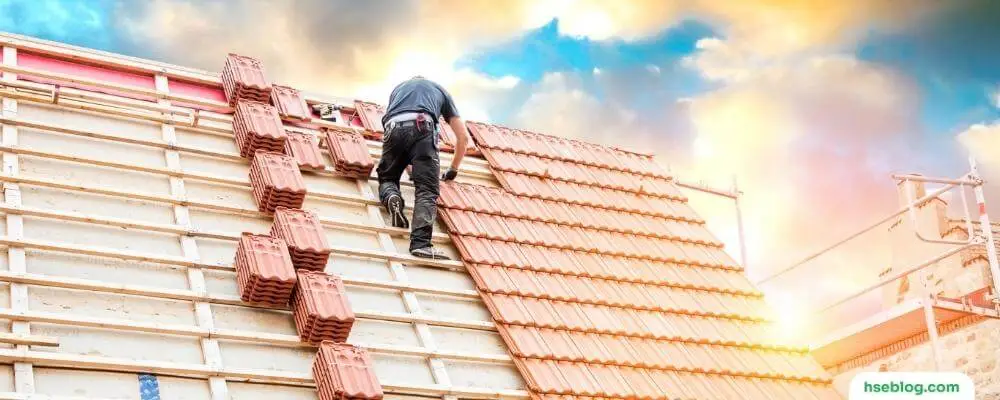
Top 11 Rooftop Safety Hazards
Rooftops can pose numerous safety hazards, especially when workers are required to access them for maintenance, construction or repair purposes. Here are 11 of the most common rooftop safety hazards:
1. Falling From Heights
Falling from heights is among the most prevalent and perilous hazards linked to working on rooftops. Regardless of the task being performed at a height, it is crucial to adopt appropriate safety measures to mitigate the risk of falls. These precautions encompass installing guardrails and fall-protection systems, as well as ensuring the correct use of safety harnesses and other personal protective equipment (PPE).
- Emphasize the importance of training: Provide adequate training to workers on proper safety procedures, including using safety equipment and recognizing potential hazards.
- Conduct regular safety inspections: Ensure safety equipment is well-maintained and inspected regularly to maintain optimal working conditions.
- Implement safety protocols: Establish and enforce safety protocols that workers must follow when working at heights, including guidelines on when to use specific safety equipment and procedures for responding to emergencies.
- Encourage a safety-conscious culture: Promote a workplace culture prioritizing safety, ensuring all employees understand the importance of following safety guidelines and reporting potential hazards.
2. Slippery Surfaces
Rooftop surfaces can become slippery due to various factors, such as rain, snow, ice, or the buildup of dirt and debris, which elevates the likelihood of slips, trips, and falls. To minimize this hazard, it is crucial to maintain clean and slip-free walking surfaces and wear suitable footwear offering adequate traction.
- Regularly inspect and clean walking surfaces: Schedule routine inspections and cleaning of rooftop walking surfaces to eliminate any slippery substances or debris that could pose a risk.
- Choose appropriate footwear: Select footwear specifically designed for rooftop work, which should be slip-resistant and provide ample support and grip to minimize the risk of slipping.
- Install anti-slip materials: Consider using anti-slip materials, such as mats, grip tape, or slip-resistant coatings, on walking surfaces to enhance traction and reduce the risk of accidents.
- Implement proper housekeeping protocols: Establish and enforce strict housekeeping practices to ensure that work areas are kept clean and organized, minimizing the likelihood of slips, trips, and falls caused by clutter or debris.
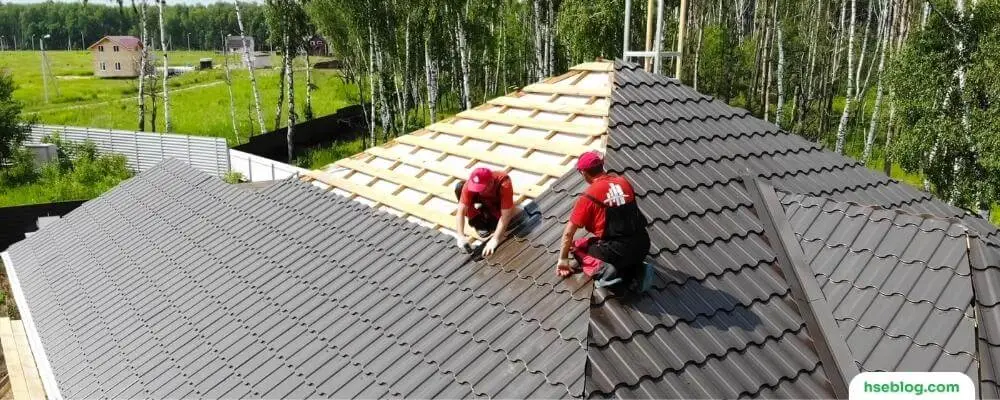
3. Poor Lighting
Insufficient lighting is a leading cause of accidents on rooftops. To mitigate this hazard, it is essential to provide proper lighting for all tasks being carried out on the roof. Utilize supplementary lighting equipment when necessary to ensure clear visibility of the entire rooftop and any potential hazards.
- Conduct a lighting assessment: Evaluate the existing lighting conditions on the rooftop to identify any areas with insufficient illumination and implement appropriate improvements.
- Use portable lighting: If fixed lighting is not adequate, consider using portable lighting devices such as floodlights or headlamps to enhance visibility during work.
- Schedule work during daylight hours: Whenever possible, plan rooftop work during daylight hours to take advantage of natural light and improve overall visibility.
- Maintain lighting equipment: Regularly inspect and maintain lighting systems, including cleaning and replacing bulbs as needed, to ensure optimal performance and prevent unexpected outages.
- Mark potential hazards: Clearly mark any potential hazards or obstructions on the rooftop using reflective paint, warning signs, or cones to draw attention to them, especially in areas with limited visibility.
4. Unprotected Holes
Unprotected openings, including skylights and ventilation ducts, pose significant safety risks on rooftops. It is essential to safeguard all such holes with appropriate measures like railings, ladders, or covers. Additionally, remain vigilant about any potential openings created by equipment or tools left on the roof.
- Regularly inspect for unprotected openings: Conduct routine rooftop inspections to identify and address any unprotected holes or openings that may present a hazard.
- Use appropriate guarding solutions: Depending on the type and location of the opening, select the most suitable guarding solution, such as railings, nets, grates, or covers, to prevent accidents.
- Educate workers about the risks: Ensure that all workers are aware of the dangers associated with unprotected holes and the importance of properly guarding them.
- Implement a thorough equipment management system: Establish a system for tracking and managing equipment and tools used on the rooftop, ensuring nothing left behind that could create potential hazards.
- Clearly mark and communicate the presence of openings: Use visible signage, warning tape, or other marking methods to indicate the presence of openings and inform workers of their locations.
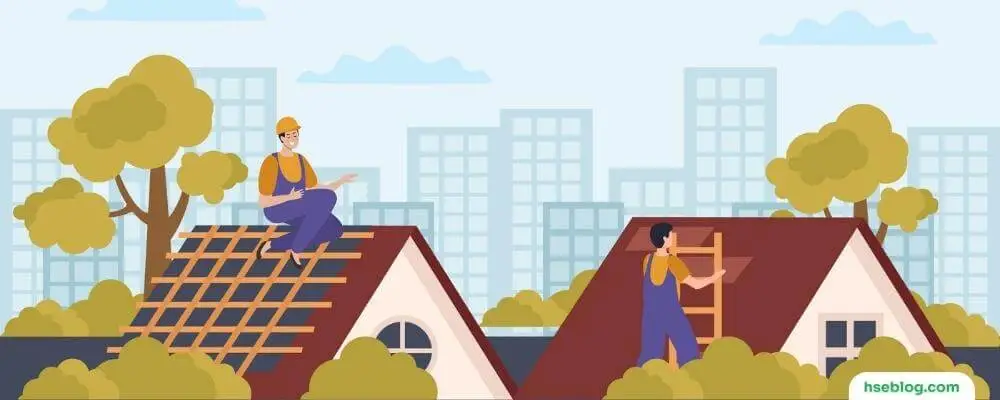
5. Electrical Hazards
Electrical hazards encompass overhead power lines, outlets, and wiring. To minimize the risk of electrocution or electric shock, make sure all electrical systems comply with relevant codes and are adequately maintained. Exercise caution while working and maintain a safe distance from any electrical sources.
- Regular electrical system inspections: Schedule routine inspections of the electrical systems on and around the rooftop to identify and address any potential hazards or violations of safety codes.
- Train workers on electrical safety: Provide comprehensive training to workers on electrical safety, including the identification of hazards, safe work practices, and emergency response procedures.
- Use insulated tools and equipment: Select tools and equipment with proper insulation to protect workers from electrical shocks while performing tasks near electrical sources.
- Establish safe clearance distances: Determine and enforce safe clearance distances from overhead power lines and other electrical sources, in accordance with regulatory guidelines.
- Implement lockout/tagout procedures: Develop and enforce lockout/tagout procedures to ensure that electrical systems are de-energized and secured before workers perform maintenance or repair tasks.
- Use Ground Fault Circuit Interrupters (GFCIs): Install GFCIs in electrical circuits to protect workers from electrical shocks due to ground faults or short circuits.
6. Ventilation Issues
Inadequate ventilation can result in an accumulation of fumes and hazardous gases inside the building, posing health risks to workers on rooftops. Ensuring that all ventilation systems are well-maintained and functioning correctly is crucial to facilitate sufficient air circulation.
- Regular inspection and maintenance: Schedule routine inspections and maintenance of the ventilation systems to identify and address any issues that could compromise air quality or circulation.
- Monitor air quality: Use air quality monitoring devices to detect the presence of hazardous gases or fumes and ensure that they are being adequately removed by the ventilation system.
- Train workers on ventilation hazards: Educate workers on the risks associated with poor ventilation and the importance of correctly maintaining and operating ventilation systems.
- Establish emergency response procedures: Develop and implement emergency response procedures for situations involving hazardous gas buildup or ventilation failure, including evacuation plans and personal protective equipment (PPE).
- Optimize ventilation system design: Work with ventilation system designers and experts to optimize the layout and efficiency of ventilation systems, ensuring that they effectively remove fumes and hazardous gases from the building.
- Provide adequate ventilation for specific tasks: If rooftop work involves using chemicals or materials that generate fumes or hazardous gases, ensure that task-specific ventilation solutions are implemented to protect workers.
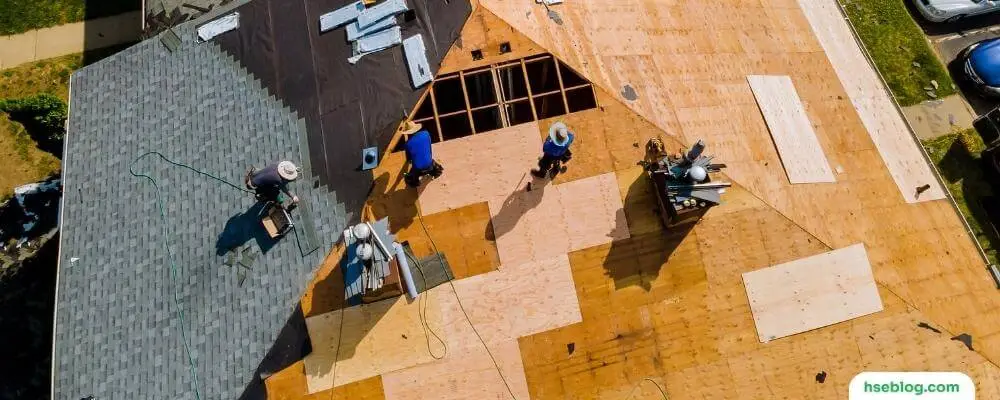
7. Weak Structures
Rooftop structures must be sufficiently robust to support the weight of workers and any equipment being utilized. Before commencing any work, inspect all structural components and adhere to each area’s recommended maximum weight limits to prevent accidents.
- Conduct structural assessments: Periodically assess rooftop structures’ integrity and load-bearing capacity to identify and address any weaknesses or potential issues.
- Train workers on structural safety: Educate workers on the importance of understanding weight limits and maintaining structural safety while working on rooftops.
- Establish weight limits: Clearly define and communicate the maximum weight limits for different rooftop areas, considering the combined weight of workers, tools, and equipment.
- Use appropriate equipment: Choose tools and equipment suitable for the rooftop structures’ load-bearing capacity and avoid using equipment that could exceed weight limits or cause structural damage.
- Monitor rooftop conditions: Keep track of any changes or deterioration in rooftop structures that could compromise their strength, and address any issues promptly to maintain safety.
- Display weight limit signage: Post visible signs indicating the maximum weight limits for each rooftop area, reminding workers to always stay within these limits.
8. Weather Conditions
Adverse weather can pose significant dangers while working on rooftops, making it crucial to adopt appropriate safety measures based on the prevailing conditions. Stay alert to potential risks associated with thunderstorms, high winds, snow and ice accumulation, extreme heat or cold temperatures, and other weather-related hazards. Refrain from working in hazardous conditions whenever possible.
- Monitor weather forecasts: Regularly check weather forecasts to anticipate and prepare for any adverse conditions affecting rooftop work.
- Train workers on weather-related hazards: Educate workers about the risks associated with various weather conditions and the appropriate safety measures to be implemented in each scenario.
- Establish weather-related safety protocols: Develop and enforce safety protocols for different weather conditions, including guidelines for when to postpone or cancel work due to unsafe conditions.
- Use weather-appropriate gear: Ensure workers have access to and use weather-appropriate personal protective equipment (PPE), such as rain gear, high-visibility clothing, or insulated clothing, depending on the conditions.
- Adapt work schedules: Adjust work schedules as needed to avoid hazardous weather conditions and minimize the risk of accidents or injuries.
- Promote a safety-first mindset: Encourage a workplace culture prioritising safety, ensuring that all employees understand the importance of postponing or cancelling work when weather conditions are hazardous.
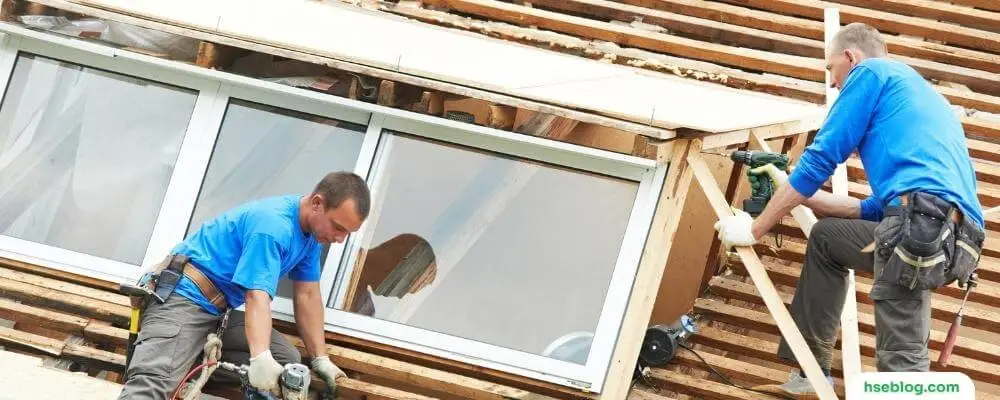
9. Unsecured Equipment
Tools or equipment left unsecured on a rooftop can lead to tripping hazards and accidents. It is essential to store all tools properly when not in use and ensure that ladders, scaffolding, or other equipment are securely fastened before initiating any work.
- Implement effective tool management: Establish a tool management system to keep track of tools, ensuring they are always accounted for, and stored safely when not in use.
- Train workers on equipment safety: Educate workers about the importance of securing equipment and proper storage techniques to minimize potential hazards.
- Conduct pre-work inspections: Before starting any work, inspect ladders, scaffolding, and other equipment to ensure they are secured and in good working condition.
- Use tool tethering: Implement tool tethering solutions, such as lanyards or tool belts, to prevent tools from falling or causing accidents when not in use.
- Establish housekeeping protocols: Implement and enforce strict housekeeping practices to maintain clean and organized work areas, reducing the likelihood of accidents caused by unsecured equipment.
- Promote a safety-conscious culture: Encourage a workplace culture emphasising safety, ensuring all employees understand the importance of securing equipment and maintaining a well-organized workspace.
10. Improper Training
Working on a rooftop inherently involves risks, and employing untrained personnel can be particularly hazardous. Inadequate training can increase the likelihood of serious injuries or fatalities due to falls or equipment-related accidents. Ensuring that anyone working on a roof receives comprehensive training is crucial to maintaining safety and minimizing potential dangers.
- Provide thorough safety training: Offer extensive safety training programs covering topics such as fall protection, hazard identification, proper use of equipment, and emergency response procedures to ensure workers are well-prepared for rooftop tasks.
- Verify safety qualifications: Confirm that all personnel have up-to-date safety qualifications in line with industry standards before allowing them to work on the roof.
- Schedule refresher courses: Periodically provide training to inform workers of the latest safety guidelines and best practices, reinforcing their knowledge and skills.
- Conduct hands-on training: Supplement classroom training with hands-on exercises and practical demonstrations to allow workers to apply their knowledge in real-world situations.
- Implement a mentorship program: Pair inexperienced workers with seasoned professionals to provide guidance and support, fostering a culture of safety and shared responsibility.
- Promote a safety-conscious culture: Encourage a workplace culture that prioritizes safety, ensuring all employees understand the importance of proper training and adherence to safety guidelines.
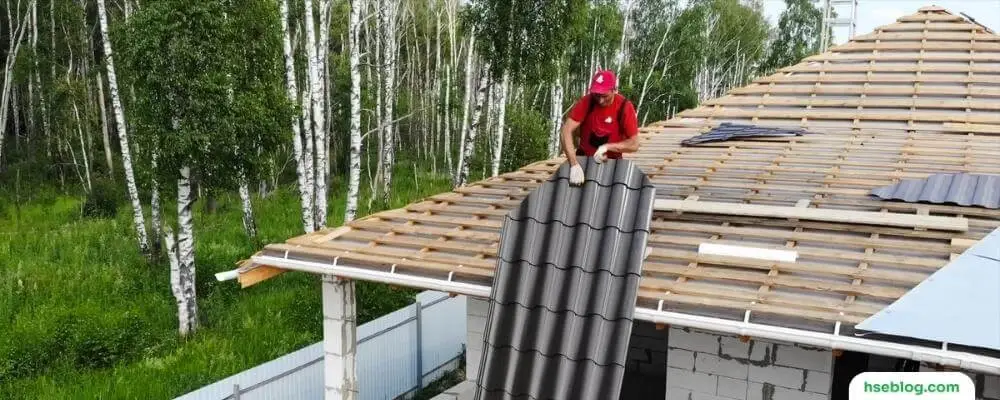
11. Unfamiliar Terrain
Rooftops can have uneven surfaces with varying inclines, slopes, and difficulty levels, posing potential risks, especially for inexperienced workers. To avoid accidents related to unfamiliar terrain, it is crucial to stay aware of your surroundings, assess the safety risks of each area, and avoid tasks outside of your skill level.
- Conduct pre-work assessments: Before starting any work, assess the rooftop terrain to identify potential hazards or areas requiring special precautions.
- Utilize appropriate safety equipment: Use personal protective equipment (PPE) such as slip-resistant shoes or boots, harnesses, or helmets to help prevent accidents.
- Train workers on unfamiliar terrain hazards: Provide adequate training on the risks associated with unfamiliar terrain and equip them with skills to navigate different surfaces safely.
- Use signage and marking: Use visible signs to indicate any uneven or dangerous terrain, reminding workers to exercise caution and stay alert.
- Establish emergency response procedures: Develop and implement procedures for accidents caused by unfamiliar terrain, including first aid, rescue, and evacuation plans.
- Encourage teamwork: Encourage workers to work in teams to help each other navigate unfamiliar terrain, share skills, and provide additional support and guidance when needed.
Conclusion
It’s essential to take rooftop safety seriously to avoid accidents and injuries. The 11 rooftop safety hazards mentioned in this blog post are just a few examples of the potential dangers you may face when working or spending time on a rooftop. By being aware of these hazards and taking necessary precautions, such as using proper safety equipment and following safety guidelines, you can help mitigate these risks and ensure a safer rooftop experience. Remember, rooftop safety is everyone’s responsibility, and it’s up to each of us to do our part to keep ourselves and others safe.

